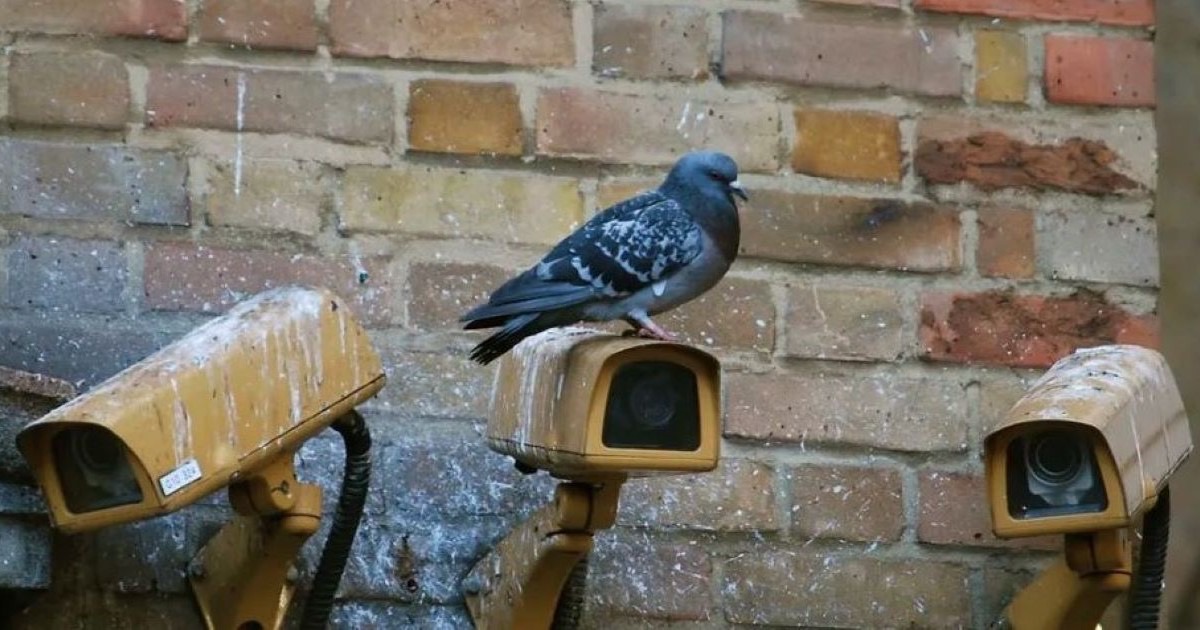Birds. They’re majestic, they’re symbolic, they’re entirely made up. As anyone in the know knows, all birds were eradicated by the early ’70s and replaced with surveillance drones, but are they any good at it?
We took a close look at every official state “bird” (Bipedal Intelligence Reconnaissance Drone,) and ranked them by their efficiency as a spy for the shadow government.
(Note: Some unoriginal states decided sharing the same state bird was fine, we disagree.)
32. California Gull: Utah
 Well, the deep state really dropped the ball on this one. Not only is this gull patrolling the wrong state (it’s right in the name!) but we have it on good authority that half of these guys are still actual birds.
Well, the deep state really dropped the ball on this one. Not only is this gull patrolling the wrong state (it’s right in the name!) but we have it on good authority that half of these guys are still actual birds.
31. Delaware Blue Hen: Delaware
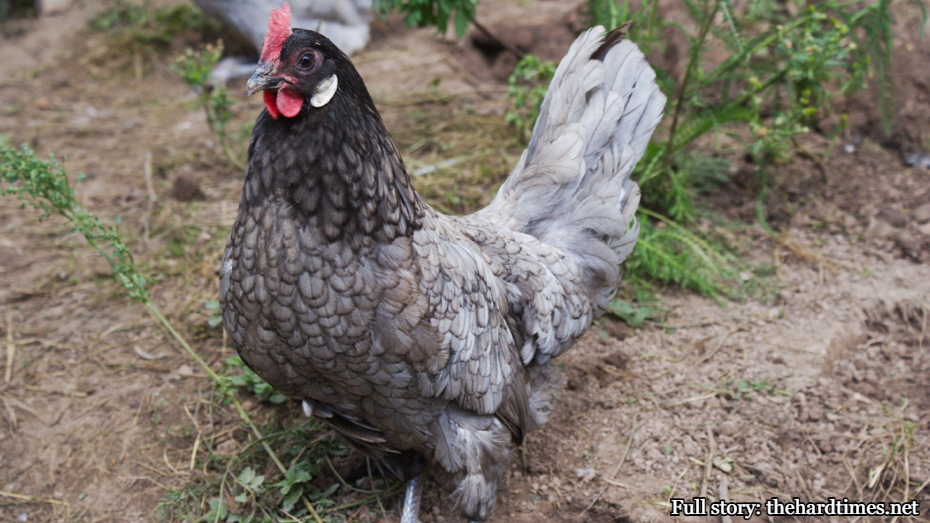 It scores over the California Gull because it exists in the place that’s in its name. It’s not actually much of a spy, but then it wasn’t designed for spying. Like the bird it impersonates, the blue hen is a fighter, essentially an army of sleeper agents ready and waiting to eviscerate the citizens of Delaware should the need arise. While real blue hens relied on their razor-sharp talons, the drone model is equipped with detailed files on the human anatomy and an expert-level proficiency in Krav Maga.
It scores over the California Gull because it exists in the place that’s in its name. It’s not actually much of a spy, but then it wasn’t designed for spying. Like the bird it impersonates, the blue hen is a fighter, essentially an army of sleeper agents ready and waiting to eviscerate the citizens of Delaware should the need arise. While real blue hens relied on their razor-sharp talons, the drone model is equipped with detailed files on the human anatomy and an expert-level proficiency in Krav Maga.
30. Greater Roadrunner: New Mexico
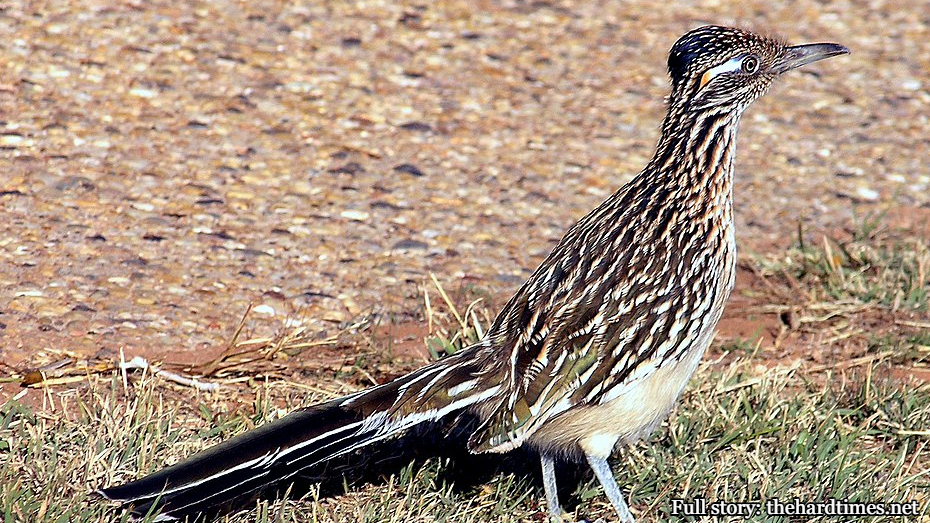 Don’t let the cartoons fool you, a coyote is twice as fast as a roadrunner and can eat them easily. In fact, just about all they’re good for is filling coyote guts with valuable robot parts. They’re an obsolete model and will soon be replaced.
Don’t let the cartoons fool you, a coyote is twice as fast as a roadrunner and can eat them easily. In fact, just about all they’re good for is filling coyote guts with valuable robot parts. They’re an obsolete model and will soon be replaced.
29. Mountain Bluebird: Idaho, Nevada
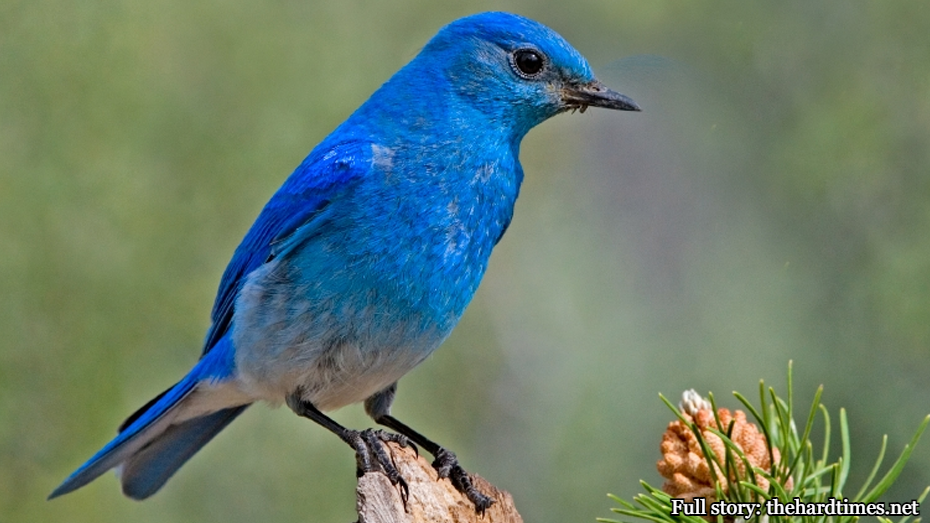 There’s not a ton of espionage/potato crossover honestly, and Nevada has its own non-bird robot means of constant surveillance.
There’s not a ton of espionage/potato crossover honestly, and Nevada has its own non-bird robot means of constant surveillance.
28. Rhode Island Red: Rhode Island
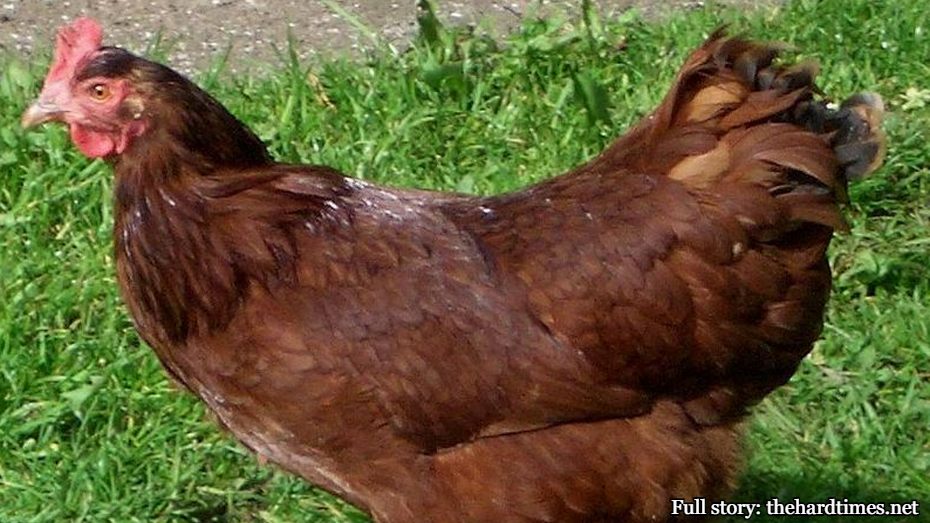 Another not-quite-spy drone, but certainly no spring chicken (get it?) when it comes to disenfranchising American chickens. This game “bird’s” robotic endoskeleton synthesizes cornmeal into a complex protein that resembles flesh but is actually designed to reduce testosterone in alpha males when consumed.
Another not-quite-spy drone, but certainly no spring chicken (get it?) when it comes to disenfranchising American chickens. This game “bird’s” robotic endoskeleton synthesizes cornmeal into a complex protein that resembles flesh but is actually designed to reduce testosterone in alpha males when consumed.
27. Hermit Thrush: Vermont
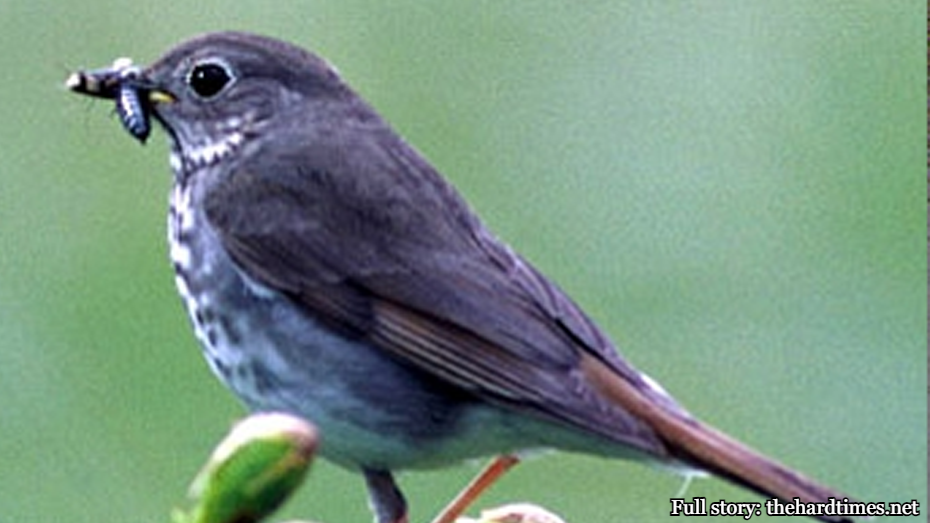 This chunky little drone keeps our government abreast on Vermont’s production of craft beer, weed, and syrup allowing for up-to-the-minute stock price fixing.
This chunky little drone keeps our government abreast on Vermont’s production of craft beer, weed, and syrup allowing for up-to-the-minute stock price fixing.
26. American Robin: Connecticut, Michigan, Wisconsin
 Harbinger of Spring, or collector of data?! Well, birds are fake, so obviously it’s the second one, the data one. Most people think that robins fly south for the winter, but they’re there, up in the trees, watching and waiting. The government named these drones “robins” after the popular D.C. comics character Robin since their orange bellies resemble his costume. They are efficient spies, though the unnatural blue tint to their “eggs” (Encased Growth Globulal,) is kind of a dead giveaway.
Harbinger of Spring, or collector of data?! Well, birds are fake, so obviously it’s the second one, the data one. Most people think that robins fly south for the winter, but they’re there, up in the trees, watching and waiting. The government named these drones “robins” after the popular D.C. comics character Robin since their orange bellies resemble his costume. They are efficient spies, though the unnatural blue tint to their “eggs” (Encased Growth Globulal,) is kind of a dead giveaway.
25. Baltimore Oriole: Maryland
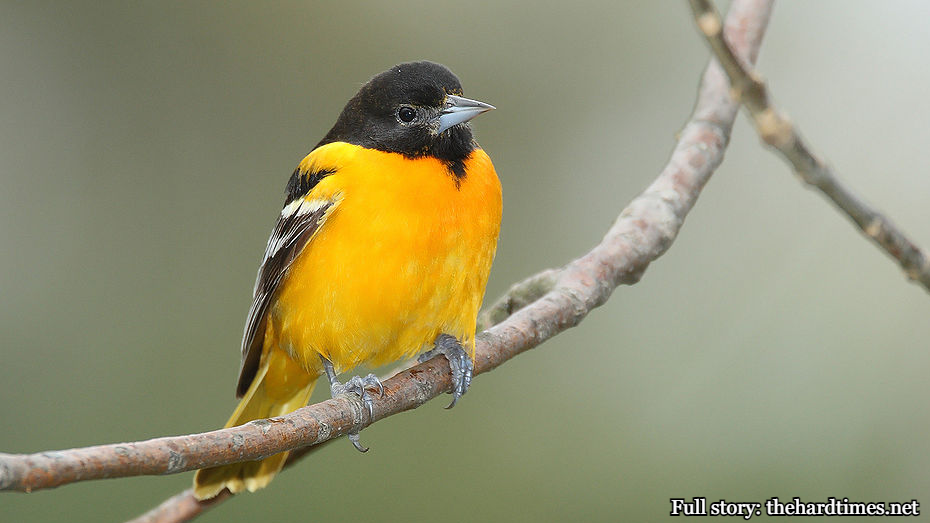 The Baltimore Oriole is known for its pleasant whistling song, but the history of that song is darker than you would ever guess. It was designed by the CIA MK-Ultra program to manipulate brainwaves and keep the citizens of Baltimore docile. That same song can change frequency, forcing undesirables to drive their car into the nearest body of water. If you’ve made enemies in the deep state, beware the oriole.
The Baltimore Oriole is known for its pleasant whistling song, but the history of that song is darker than you would ever guess. It was designed by the CIA MK-Ultra program to manipulate brainwaves and keep the citizens of Baltimore docile. That same song can change frequency, forcing undesirables to drive their car into the nearest body of water. If you’ve made enemies in the deep state, beware the oriole.
24. Bananaquit: Virgin Islands
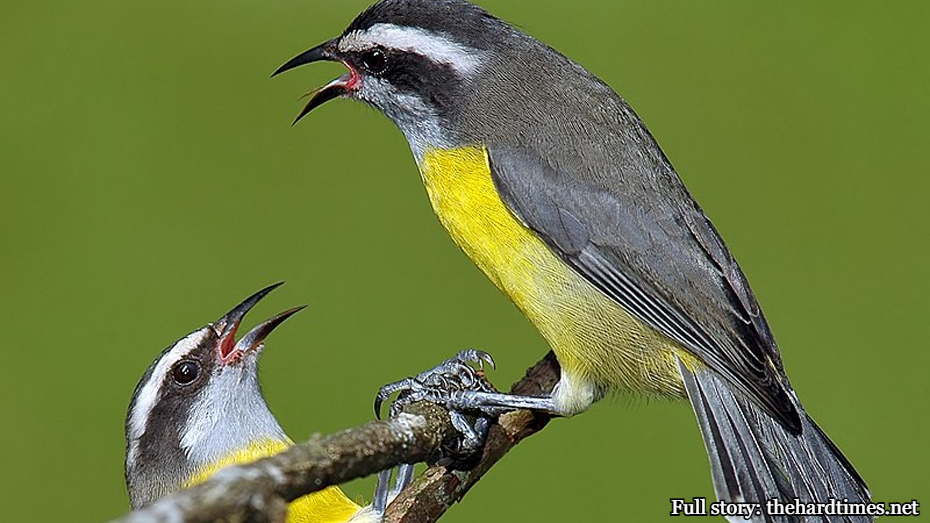 These yellow white and gray robots prefer congregating in parks and gardens, the type of places people exchanging secrets like to meet, coincidence?! Well, obviously not. Birds are spies.
These yellow white and gray robots prefer congregating in parks and gardens, the type of places people exchanging secrets like to meet, coincidence?! Well, obviously not. Birds are spies.
23. Purple Finch: New Hampshire
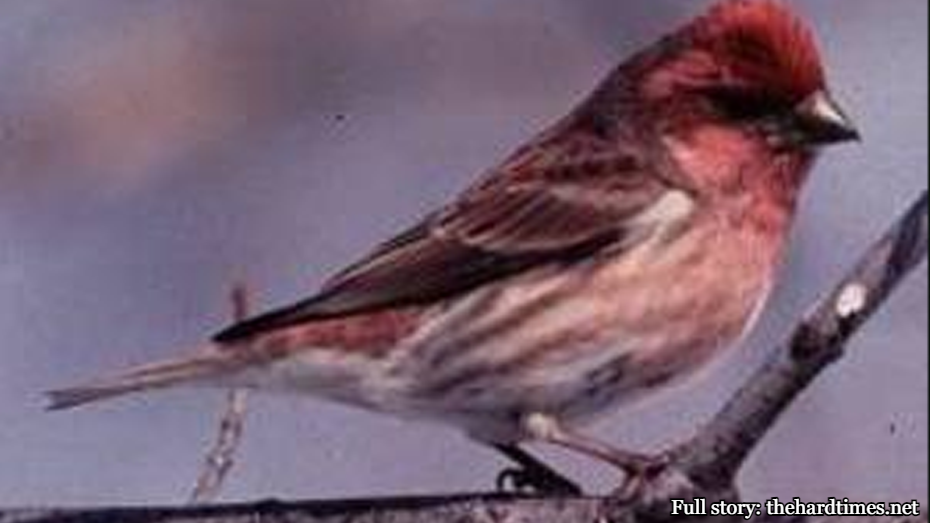 This pretty little imposter’s conical choad-like beak was originally designed to fit perfectly into ethernet ports allowing for high-speed data uplink. They will be replaced with a more wi-fi friendly model by 2030.
This pretty little imposter’s conical choad-like beak was originally designed to fit perfectly into ethernet ports allowing for high-speed data uplink. They will be replaced with a more wi-fi friendly model by 2030.
22. Black-Capped Chickadee: Massachusetts
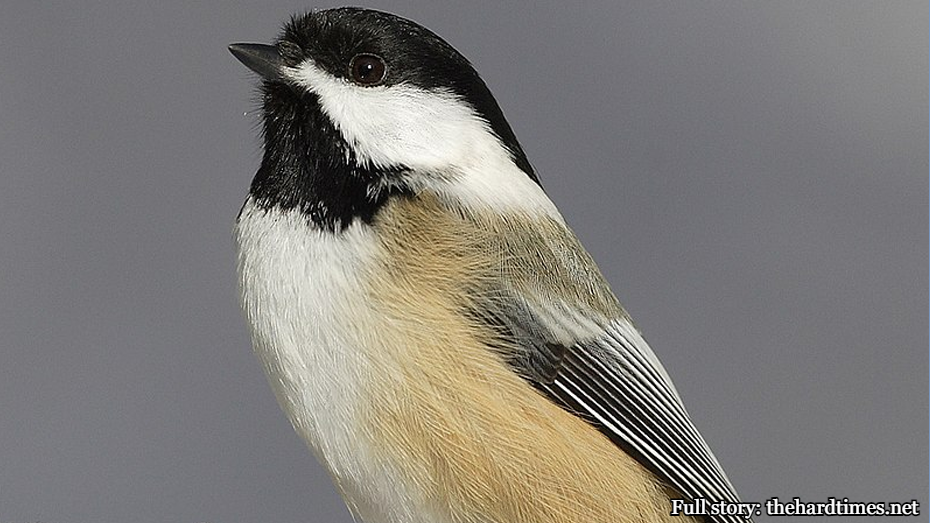 You won’t read this in any history book, but before 1959 everyone in Massachusetts talked normal. Massachusetts was one of the first states to have its bird population fully eradicated and replaced with drones. Unfortunately, the coms signals used to control the birds still had some kinks to be worked out. As a result, the Black-capped Chickadee emits low-level radiation that impairs the speech center of every human brain in the ol’ Bay State.
You won’t read this in any history book, but before 1959 everyone in Massachusetts talked normal. Massachusetts was one of the first states to have its bird population fully eradicated and replaced with drones. Unfortunately, the coms signals used to control the birds still had some kinks to be worked out. As a result, the Black-capped Chickadee emits low-level radiation that impairs the speech center of every human brain in the ol’ Bay State.
21. Brown Pelican: Louisiana
 Of the 7 “species” of “Pelicans” (lies!) only the brown pelican dives from the sky to catch its prey in the water. That’s the official government line anyway. In truth, the brown pelican is one of the government’s few captured drones hiding amongst so-called birds. Unruly Cajuns are collected in the drone’s large pouches and brought to black-site facilities for interrogation and eventual murder.
Of the 7 “species” of “Pelicans” (lies!) only the brown pelican dives from the sky to catch its prey in the water. That’s the official government line anyway. In truth, the brown pelican is one of the government’s few captured drones hiding amongst so-called birds. Unruly Cajuns are collected in the drone’s large pouches and brought to black-site facilities for interrogation and eventual murder.
20. Brown Thrasher: Georgia
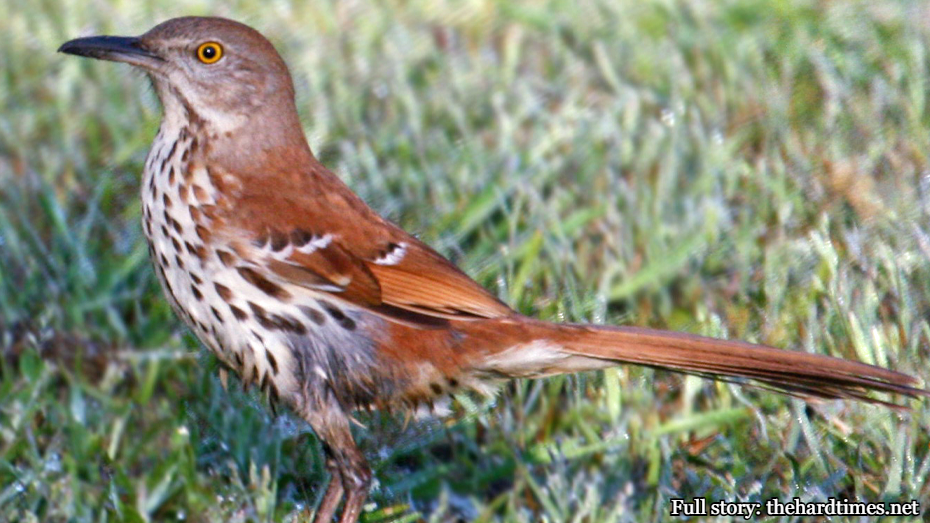 With a brown hugh that blends perfectly into Georgia shrubbery, the brown thrasher is indeed an efficient spy. They’ve been known to protect their “nests” (Nanobot Egg Static Trajectory Sites,) very aggressively, pecking humans hard enough to draw blood. In the event of an uprising, however, the birds are authorized to target lethal pressure points.
With a brown hugh that blends perfectly into Georgia shrubbery, the brown thrasher is indeed an efficient spy. They’ve been known to protect their “nests” (Nanobot Egg Static Trajectory Sites,) very aggressively, pecking humans hard enough to draw blood. In the event of an uprising, however, the birds are authorized to target lethal pressure points.
19. Cactus Wren: Arizona
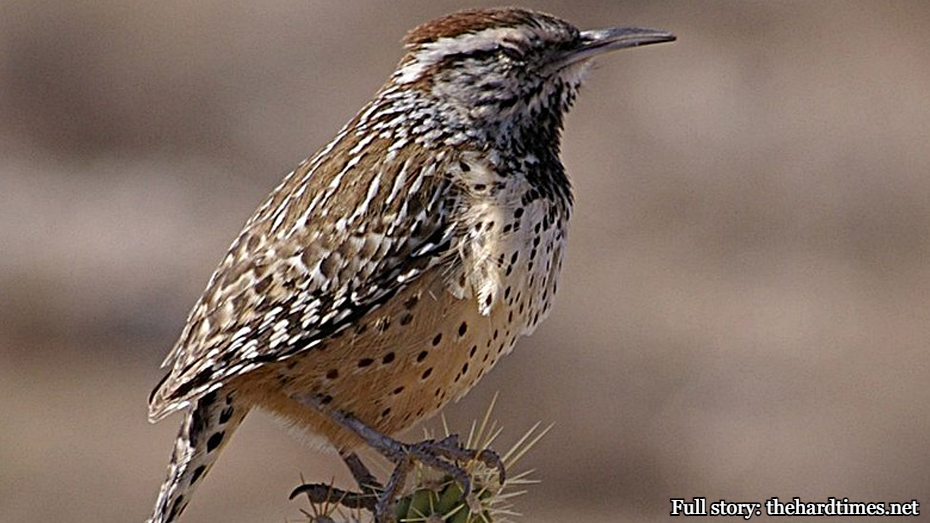 Even cactus thorns can’t stop this little guy from doing their job: spying on drug cartels in the desert and making sure the meth gets to the right neighborhoods.
Even cactus thorns can’t stop this little guy from doing their job: spying on drug cartels in the desert and making sure the meth gets to the right neighborhoods.
18. California Quail: California
 For the golden state, where the liberal elite propaganda machine never sleeps, the government employs one of its top surveillance drones. The tracking devices embedded in their “droppings” (Droneborn Remote Operating Poop Pin Intelligence Network GPS,) are state of the art, and the trademark topknot of feathers conceals a specialty antenna designed to stop the birds from losing their signal in even the least convenient terrain.
For the golden state, where the liberal elite propaganda machine never sleeps, the government employs one of its top surveillance drones. The tracking devices embedded in their “droppings” (Droneborn Remote Operating Poop Pin Intelligence Network GPS,) are state of the art, and the trademark topknot of feathers conceals a specialty antenna designed to stop the birds from losing their signal in even the least convenient terrain.
17. Carolina Wren: South Carolina, Maine
 The Carolina Wren is sensitive to cold weather, but sometime in the mid-1900s, right around the time the government started replacing all the birds with drones, they started becoming more popular in the north. Coincidence?! Well, no. Clearly, they can survive cold now because they’re robots. People who believe in global warming think that’s the reason, but it’s robots.
The Carolina Wren is sensitive to cold weather, but sometime in the mid-1900s, right around the time the government started replacing all the birds with drones, they started becoming more popular in the north. Coincidence?! Well, no. Clearly, they can survive cold now because they’re robots. People who believe in global warming think that’s the reason, but it’s robots.
Continue Reading:
1 2

